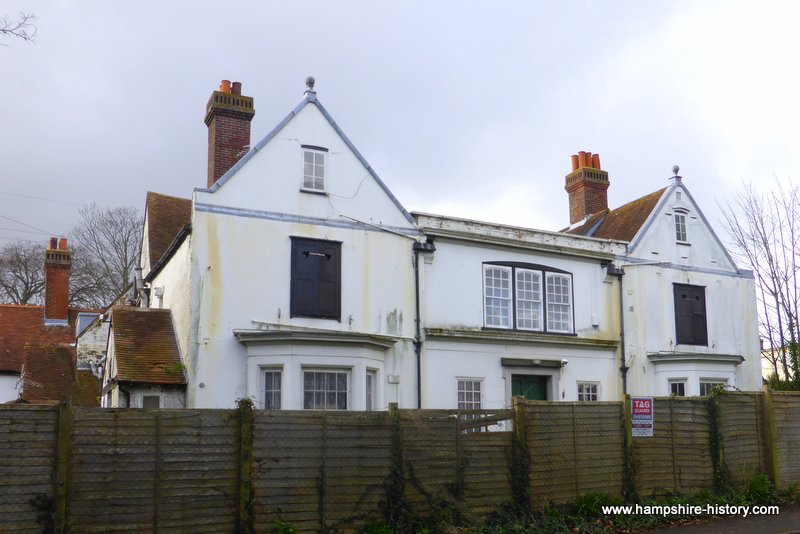Wymering Manor sits incongruously in today’s large sprawling suburb of Wymering. It looks a little worst for wear and yet is the custodian of at least 1500 years of history. It is a house full of mystery and is among the oldest known dwellings in Hampshire.
In the first instance, put aside the tales of Wymering Manor being the most haunted house in England, we will allude to these stories later but consider the history of the site.
Wymering Manor sits alongside the ancient church of St Peter and St Paul, at the crossing point of two ancient tracks, one running north south from the shore of Paulsgrove Lake to the top of Portsdown Hill (Cow Lane and Old Wymering Lane) and the other running east west from Cosham to Portchester.
There is evidence of a Roman settlement just south of the manor house, it was possibly a defensive site, protecting the route to Porchester Castle. Various Roman artefacts and structures have been identified including a Roman cemetery.
When the Romans left these shores in the early C5th, the Saxons made progress into the area and it is thought that among them was one who had the name Wimma. It would have been a good choice of settlement, close to the coast on land already settled, with a communication route in place and close to the fortified Portchester Castle. The ing, inge, ynnge ending to the place name is an Anglo Saxon ending meaning belonging to.
As with so many things Anglo Saxon, traces of their footprints are difficult to find. In the cellars of the manor house the massive foundations are made up of flints and could have been the original ones from the Saxon Norman period. They are definitely early and would have supported a large dwelling. The manor today is of Medieval construction, a timber frame filled with daub. Layered over the Medieval are Elizabethan chimneys and Jacobean woodwork in the staircase. It is no longer possible to see the inside but some excellent shots of the interior can be seen on a You Tube video (ignore the paranormal bit and concentrate on the buildings structure, it is very interesting).
So what are the mysteries?
They lie in the owners of the building as much as in the building itself. The occupancy can be traced from 1042 AD to the present day, that’s pretty remarkable. The Wayte family owned the building for nearly 300 years. It then passed to the Bruning family through marriage, who occupied it from 1562. The Brunings were staunch Roman Catholics and Wymering Manor has its own priests hole and a possible chapel hidden in the roof space. Several parts of the building look slightly out of kilter suggesting other hiding places. Indeed being close to the coast and France it is possible that Wymering Manor hid more than its fair share of Catholic priests.
The Waytes also married into the Norton family, a family closely involved with the politics and intrigue of the C16th, one wonders what discussions may have taken place within the walls of Wymering Manor.
Tales of seduction in the early Medieval period, when Sir Roderick of Portchester took advantage of an absent husband to visit a pretty young wife who was living in the manor house. The husband returned, killed Sir Roderick as he was making his escape and it is his bolting horse that forms one of the many haunting tales that accompany the property.
Outside towards the crossroads, a gallows once stood, where highway men were left to swing exposed for all to see as the coaches passed along the Portsmouth Southampton road.
The Hauntings
The hauntings have been a part of the buildings history for hundreds of years and many paranormal societies have investigated the property, judge for yourselves, much is written about them.
More important is the future of the house. It is now owned by Portsmouth City Council and has fallen into disrepair but a group of interested people have formed the Wymering Manor Trust, to ensure the buildings future. You can make contact with them directly via the site.


